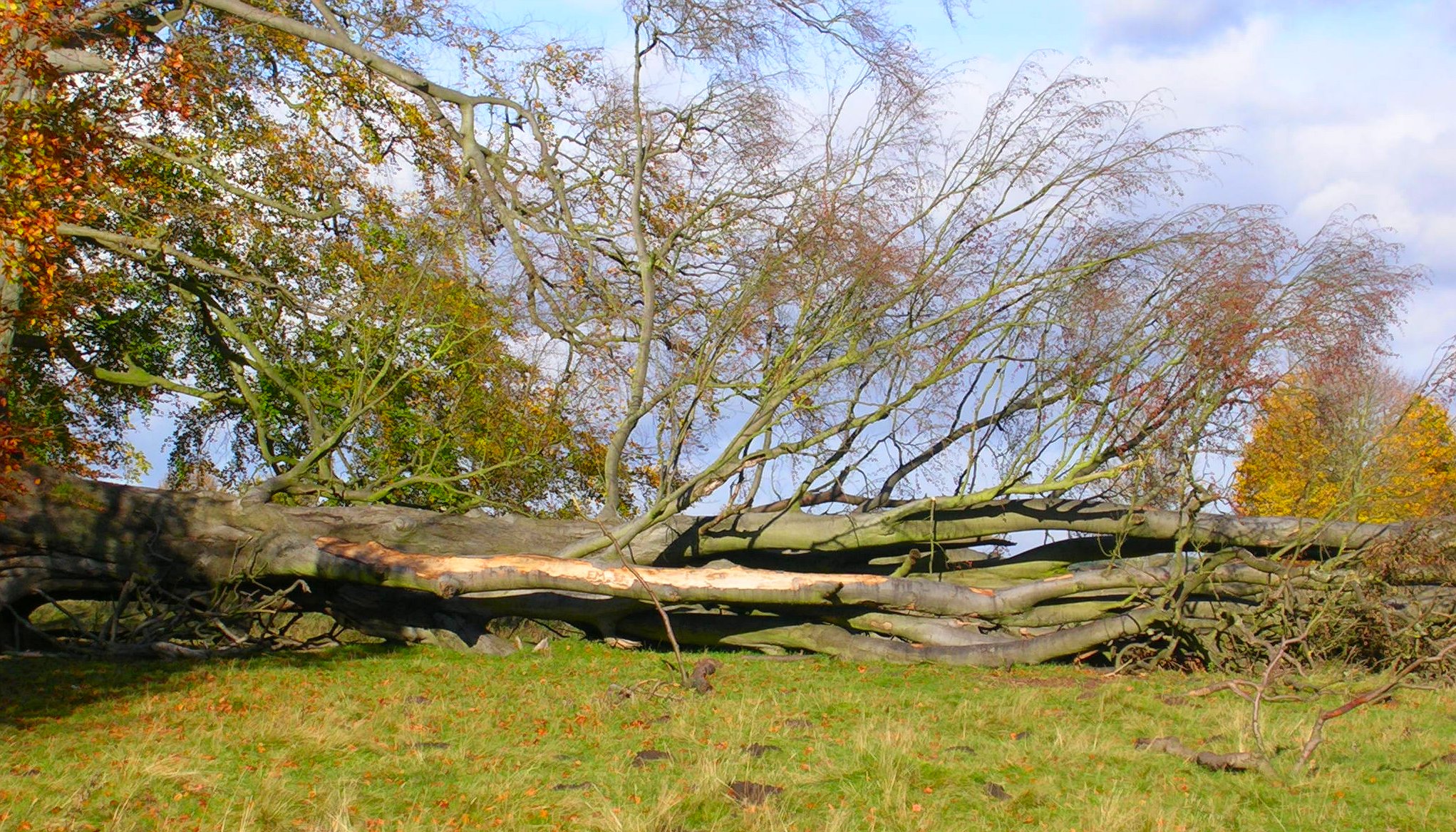FUNGAL FRIENDS GROUP NEWS |
(Member of the Fungus Conservation Trust - Registered Charity No. 1118651) |
ID WORKSHOP |
5. The Tatton Beech - An ongoing saga I suppose this isn't a typical ID workshop feature but more of a what to see and when to see it on a specific host. The host in question is a freshly fallen beech tree at Tatton Park that fell victim to fungal attack and was left to rot down. Upon finding this dead behemoth in 2010 I thought it would be worthwhile to wait and then to to record all the species of fungi found growing on and around the woody substrate and hopefully give you the reader some pointers has to how much potential a fallen tree can offer. It would be also profitable to hopefully build up an account of the initial feeders, the secondary feeders and the final executors and try to relate something of a story of the trees afterlife. A few weeks after setting up this project John Taylor of the North West Fungus Group kindly offered his assistance in identifying and keeping a tally of species found. I really appreciated this kind gesture and welcomed John into the foray! Factors taken into consideration during the survey were:- Competition of species
The Tatton Beech (Fagus sylvatica) The following list will grow and grow over a lengthy period of time and will be kept in chronological order 9th October 2012 - Meripilus giganteus (the initial destroyer of the tree, found on the weakened roots in large quantities) 9th October 2012 - Hypoxylon fragiforme (clustered on the bark of branches and main trunk) 9th October 2012 - Schizophyllum commune (in tiers on the bark of outer branches, sometimes in large groups) 30th October 2012 - Nectria cinnabarina (on the bark of higher twigs in small clusters) 30th October 2012 - Stereum hirsutum (on higher branches in the encrusting stage) 3rd November 2012 - Phlebia radiata (encrusting in a small patch on upper branches) 24th November 2012 - Trichoderma viride (beneath fallen branches on bark) 24th November 2012 - Nectria coccinea (many common individual growths on bark of main trunk) 24th November 2012 - Merismodes anomala (on bark of fallen branch and showing characteristic hairs under microscope) 24th November 2012 - Diatrype disciformis (clustered and bursting through bark of medium sized branch) 24th November 2012 - Resupinatus applicatus (on lower surface of thick fallen branch) 24th November 2012 - Crepidotus epibyrus (on leaves, mast and upper) twigs) 24th November 2012 - Tubaria furfuracea (in grassy soil and litter between upper branches) 24th November 2012 - Byssomerulius corium (located on decorticated branches) 24th November 2012 - Melanotus horizontalis (growing from the edge of bark on large attached branch) 24th November 2012 - Libertella faginea (ribbons of conidia hanging down from bark on underside of main trunk and branches) 24th November 2012 - Xylaria carpophila (on scattered beech masts and upper end of fallen tree) 24th November 2012 - Auricularia auricular-judae (growing primarily from broken ends of attached branches) 24th November 2012 - Chondrostereum purpureum (elongated fruiting bodies erupting through crack in bark) 24th November 2012 - Bjerkandera adusta (on exposed wood of broken roots that were attached to main trunk) 13th January 2013 - Crepidotus variabilis (on fallen branches) 13th January 2013 - Crepidotus luteolus (on fallen branches) 13th January 2013 - Dacrymyces stillatus (on exposed wood) 13th January 2013 - Bulgaria inquinans (on bark of main trunk) 13th January 2013 - Hymenoscyphus fructigenus (on fallen beech mast) 10th October 2013 - Trametes gibbosa (on main trunk) 10th October 2013 - Hypholoma fasciculare (on branch off main trunk) 10th October 2013 - Pleurotus ostreatus (on main trunk) 10th October 2013 - Coprinellus impatiens - (grassy soil around debris) 27th October 2013 - Oudemansiella mucida - (on main trunk) 2nd June 2015 - Coprinellus domesticus - (on debris) 21st August 2015 - Gloeophyllum sepiarium - (on main trunk) 21st August 2015 - Gymnopus dryophilus - (within fallen debris) TOTAL AS OF 21st August 2015 - 33 species. |
